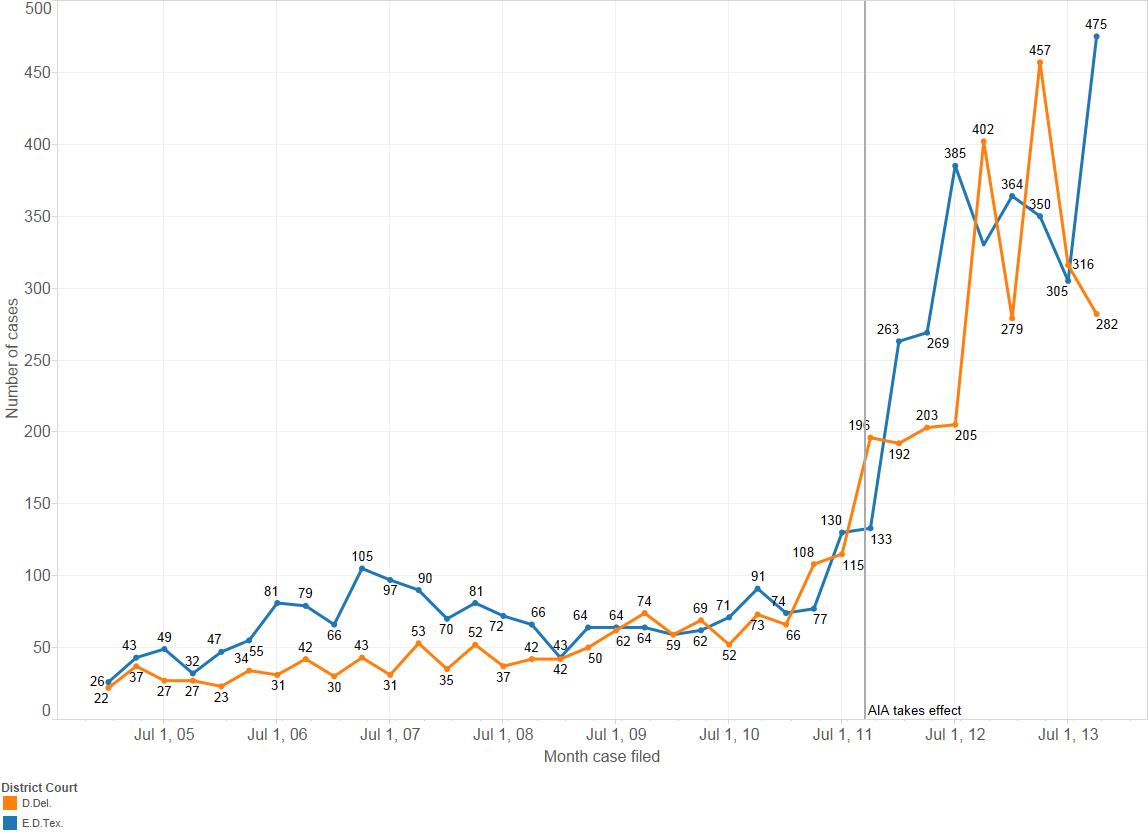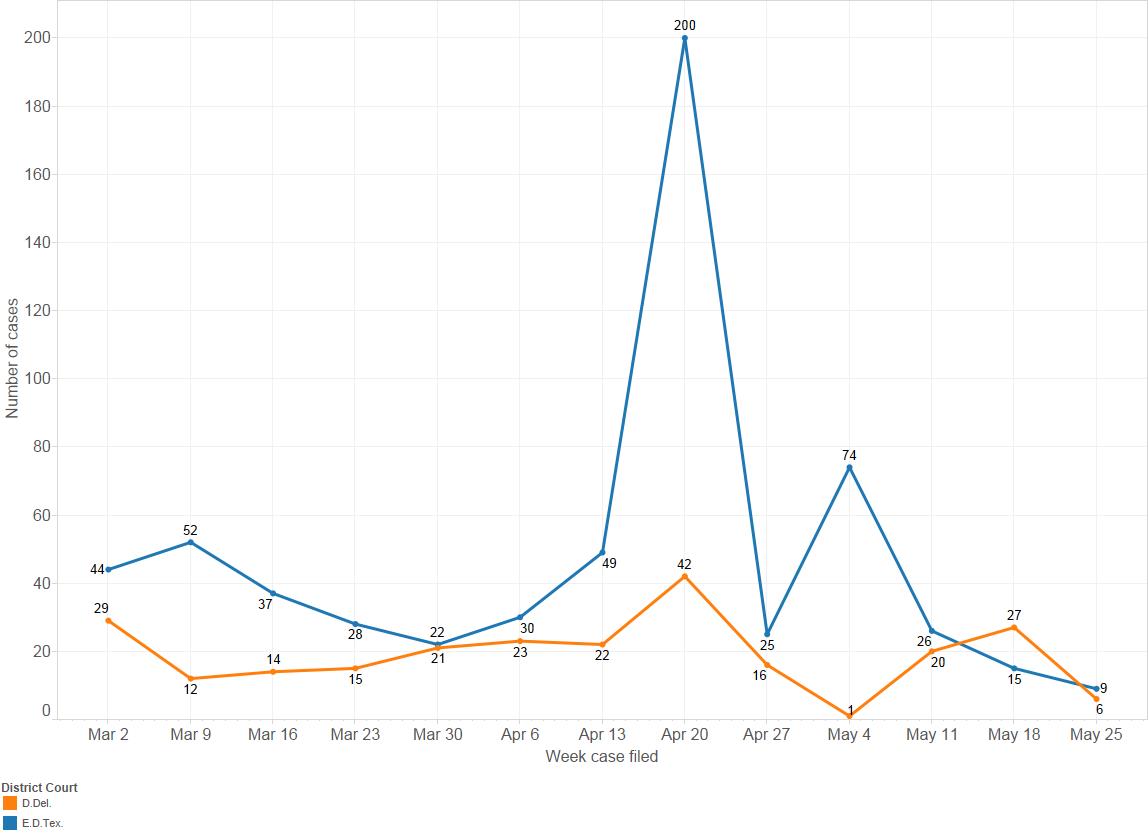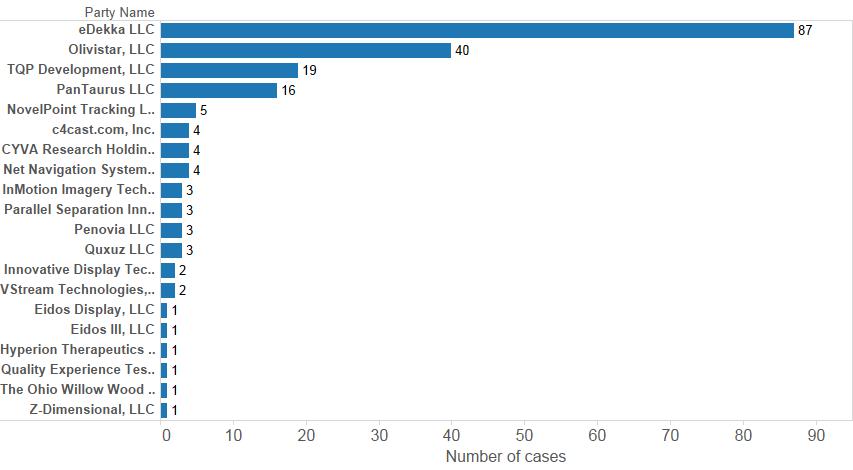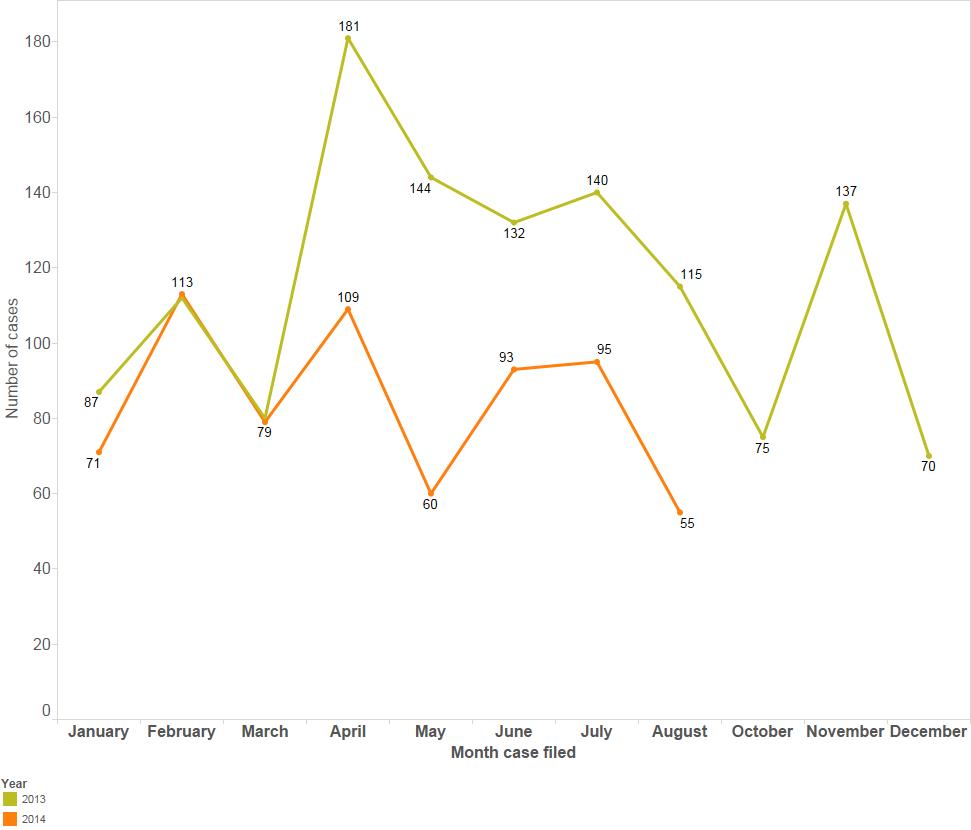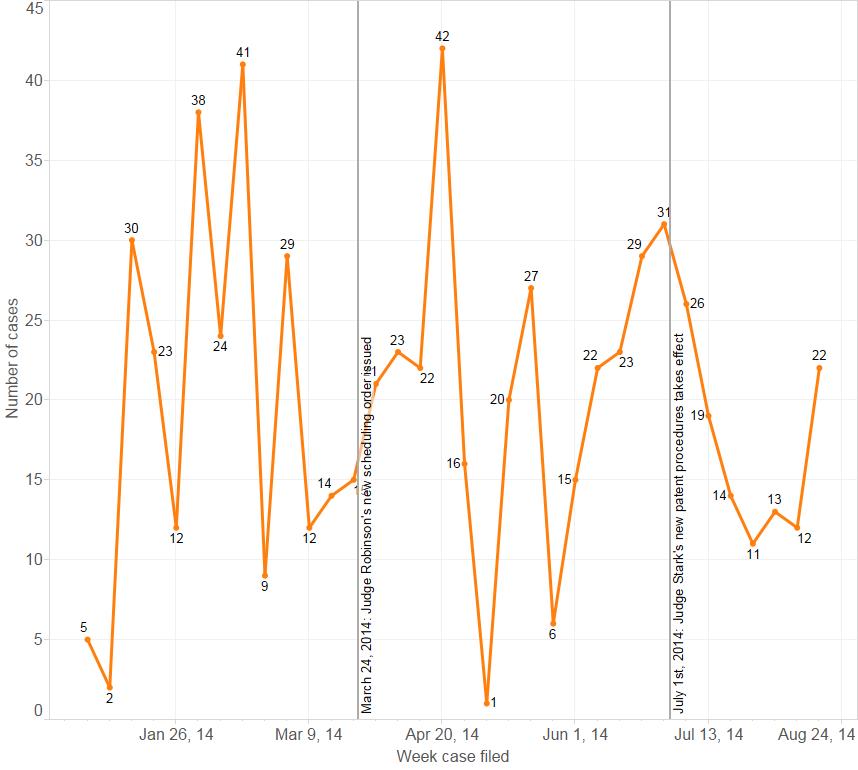By Brian C. Howard, Legal Data Scientist & Director of Analytics Services
Over the last few years, the Eastern District of Texas and the District of Delaware have led the nation in the number of patent cases filed each year.
Fig. 1: Patent cases filed per month, in E.D. Texas (blue) and D. Del. (orange), 2005-2013
In 2014, however, E.D. Texas appears to be gaining popularity, while Delaware declines.
Eastern District of Texas
Fig. 2: E.D. Texas is up 15.9% from last year’s first week of September
District of Delaware
Fig. 3: D. Del. is down 34.1% from last year’s first week of September
Why is Texas gaining on Delaware?
Zooming in on 2014 and looking at the per-month totals between the two districts shows that much of Texas’s gain occurred in a single month.
Fig. 4: Patent cases filed per month, in E.D. Texas (blue) and D. Del. (orange), January 2013-July 2014.
In fact, the spike really occurred within the single week of April 21th:
Fig. 5: Patent cases filed per month, in E.D. Texas (blue) and D. Del. (orange), March-May 2014.
To understand the spike better, I looked at which plaintiffs were responsible for bringing the cases comprising the spike:
Fig. 6: Top plaintiffs by cases filed in E.D. Tex. during the week of April 21, 2014. (Note Eidos Display and Eidos III participated in the same case)
Cases filed by eDekka LLC, Olivistar LLC, TQP Development LLC, and PanTaurus LLC are responsible for most of the increase Eastern Texas experienced in April: 162 out of 200 cases brought.
The Decline of Delaware?
Not only has Texas experienced a jump in filings, but year to date, fewer cases have been filed in Delaware during 2014 than last year, in 2013.
Fig. 7: Patent cases filed by month, in D. Del., 2013 (yellow) vs 2014 (orange)
To improve and streamline its handling of patent cases, the District of Delaware convened a Patent Study Group (PSG), led by Judges Robinson and Stark. In the last few months, the PSG started to have a practical effect as its conclusions have gone into effect.* Specifically, Judge Robinson issued a new scheduling order in late March 2014, and Judge Stark issued an entirely new set of patent procedures including a new scheduling and pretrial orders taking effect on July 1, 2014.
* Many of the scheduling orders and procedures resulting from the PSG do not apply to ANDA cases (or are specific to only ANDA cases).
Several observers have questioned what effect these new procedures might have on case filings. Although only a few weeks have elapsed since the rule changes, Judge Stark’s new patent procedures have so far coincided with a decline in the number of cases filed.
Fig. 8: Patent cases filed by week, in D. Del., 2014 (showing lines with Judge Robinson’s new scheduling order March 24, and Judge Stark’s new procedures July 1st).
